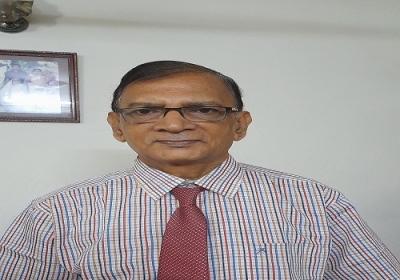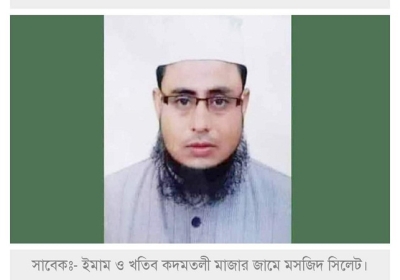Build a nagariya (urban) Bangladesh with 100% employment
As suggested by Mr. Abu Taleb, Bangladesh needs to establish 360 new nagariya administrative units (pourashavas) by 2025 and 280 new pourashavas by 2030 towards building a nagariya Bangladesh with 100% employment, a 2-tiered local/field administrative system, 100% nagariya krishi, 100% food security, 100% balanced food, 100% balanced environment, 100% planned cities/towns, 100% social security, 100% health insurance, 100% smoke-free society, 100% women's empowerment, 100% education, 100% knowledge-based society, 100% quality electricity, 100% fire safety, 100% affordable housing, 100% high speed internet, 100% inclusive society, 100% nagariya sanskriti, 100% justice, 100% planned communication network, 30 million overseas employment, a developed democracy, etc. Accordingly, every budget of the budgetborsho (July-June) should allocate money to establish 360 new pourashavas by 2025 and 280 by 2030, and the Ministry of LGRD and Co-operatives must fully strengthen the nagariya administrative units across the country.
-----------------------------------------------------------------------------------------------------------------------------------------------------------------------------------------------------------------------------------------
The nagarayan (urbanization) towards building a nagariya Bangladesh is rapidly increasing as stated by the GonoSwapno 2050 (people's vision 2050) on January 13th, 1997. Specifically, this nagarayan is very rapidly increasing in and around the 20,000 okrishi unnayan hubs (haat- bazaars) in the 4,571 grameen administrative units (Unions) and the 360 nagariya administrative units (Paurosavas, City Corporations and Cantonment Boards). Unlike grameen administrative units (4,571 unions), Bangladesh desperately needs to establish 360 new nagariya (urban) administrative units to manage more complicated and complex problems in the okrishi unnayan hubs/areas by 6/2025 (8FYP) and 280 new nagariya administrative units by 6/2030 (9FYP) as suggested by Mr. Abu Taleb towards building a nagariya Bangladesh as a final stage via present grameen-nagariya Bangladesh as an intermediary stage. And, for more okrishi employment, more okrishi unnayan, planned nagariya krishi, balanced environment, better nagariya management etc, Bangladesh should fully strengthen its 360 nagariya administrative units and 20,000 okrishi unnayan hubs in the 4,571 unions. And the government now should mainly focus on building a nagariya Bangladesh with 100% employment (domestic and overseas), of which 95% okrishi employment and 5% krishi employment.
By the way, the nagariya Bangladesh is: Many in One. It has many specific faces/pillars/phases/elements/steps; and they should/must be understood by all. The campaign since 13th January 1997 towards building a nagariya Bangladesh has already reached to 25 years on January 13th, 2022. Unfortunately, its importance and progression are not yet fully realized by all; both should be fully realized by all too, and this campaign towards building a nagariya desh as a final stage via grameen-nagariya desh as an intermediary stage as defined by Abu Taleb in 1997 should be officially/formally recognized by the government soon without anymore delay.
As we all know, Bangladesh already has so many field/local administrative Bibhags, Zillas, Upazilas and Unions; in reality, Bangladesh does not need new Bibhag, Zilla, Upazila and Union at all; so the NICAR should not establish new Bibhag, Zilla, Upazila and Union, rather the NICAR should decrease the large number of the grameen/palli (rural) administrative units such as Unions and Upazilas as well. Based on the grameen Bangladesh (rural Bangladesh), the local/field administrative units are haphazardly organized in tiers/layers that are the 4-tiered local/field administrative system the country now has and the country once had a 5-tiered field/local administrative system too. Bangladesh is a rural-urban country since 1997 as defined by Mr. Abu Taleb, but it is not yet officially recognized by the government. Unlike grameen desh, the government should organize the local/field administrative units in tiers/layers based on the current grameen-nagariya desh with the three types (grameen-nagariya, gameen and nagariya) of units and the future nagariya desh with only nagariya units; and Bangladesh should finally have a 2-tiered field/local administrative system. To review the two alternative proposed plans that presented by Mr Abu Taleb at a national seminar held in Dhaka on 13 January 1997 based on the grameen-nagariya Bangladesh and the future nagariya Bangladesh, please see the first, second, third and fourth pages of the attached document that is written in Bangla sutonny font.
As well, the Local Government Division (LGD) of the LGRD and Co-operatives Ministry should strengthen the nagariya units with 100% nagariya mentality/culture to efficiently manage more complex and complicated nagariya (urban) matters/problems. To advance nagariya unnayan with 100% balanced environment and 100% nagariya krishi along with the grameen/palli unanayan, the name of the Ministry of Local Government, Rural Development and Co-operatives and its responsibilities should be changed with the three divisions. According to Mr. Abu Taleb's proposal, the proposed name of the ministry is: Sthaniya Sarkar, Samabaya, Palli o Nagariya Unnayan Montranalaya; and three proposed bibhags (divisions) are: Sthaniya Sarkar Bibhag, Samabaya Bibhag, and Palli o Nagariya unnayan Bibhag. As well as, the proposed new name for the "Palli Unnayan Academy" is "Palli o Nagariya Unnayan Academy" and the new name for the "Bangladesh Palli Unnayan Board" is "Palli o Nagariya Unnayan Board". As well, the proposed new names for "Palli Daridro Bimochon Foundation" is "Palli o Nagariya Daridro Bimochon Foundation", "Bangladesh National Co-operative Federation for Rural Development" is "Bangladesh National Co-operative Federation for Palli o Nagariya Unnayan" and "Palli Karma-Sahayak Foundation" is "Palli o Nagariya Karma-Sahayak Foundation" etc.
We hope the government will soon act on the matters to recognize and advance the present grameen-nagariya Bangladesh as an intermediary stage now and the future nagariya Bangladesh (GonoSwapno 2050) as a final stage during the period of 2021-2050, but our young/new generation since 1997, unlike old generation, has been very warmly welcoming the Ganoswapno 2050, nagarayan, grameen-nagariya desh, nagariya units, nagariya desh, 20,000 okrishi unnayan hubs in the 4,571 Unions, okrishi employment, and Okrishi unnayan in industry, commerce, service, bank, stock market, financial institution, health, electricity, education, tourism, restaurant & hotel, construction, paribahan, automobile, energy, media, film, jewelry, post & tele communication, communication network through road, rail, water, bridge, tunnel and air, balanced environment including climate change, quality sanitation, cleanliness, RMG, knitwear- textile, internet, digital, IT, ICT, CMSMEs, economic zones, etc.
It is very important to keep in mind that Bangladesh is no more a grameen desh (rural country); it is now a grameen-nagariya desh as an intermediary stage; and Bangladesh is rapidly heading towards becoming permanently a nagariya desh (urban country) as per GonoSwapno 2050 (people's vision 2050). As predicted in 1997, currently, about 50% people are directly-indirectly living in the nagariya areas; by 2030, about 70% people will live in the nagariya areas; by 2040, about 80% people will live in the nagariya areas; and 100% people will be nagariya residents by 2050 in Bangladesh. Bangladesh now has 360 nagariya administrative units including Cantonment Boards and about 20,000 okrishi unnayan hubs (haat-bazaar in the 4,571 Unions). Bangladesh should establish 360 new nagariya administrative units (pourashavas) during the period 7/2020-6/2025 of the 8th Five Year Plan and 280 new pourasahavas during the period 7/2025-6/2030 of the 9th Five Year Plan as suggested by Abu Taleb. The government could do that by providing needed cash support through each budgetborsho's budget, then Bangladesh will have 720 nagariya administrative units by 6/2025 and 1000 nagariya administrative units by 6/2030. Thus the nagariya units, nagariya residents, okrishi unnayan for 95% okrishi employment and 100% nagariya krishi will be increasing in Bangladesh.
In addition, at present, the okrishi khat's contribution to the GDP is about 88%, and the krishi khat's contribution to the GDP is about 12%; by the end of the 8th Five Year Plan's period (7/2020-6/2025), the krishi khat's contribution to the GDP will be about 10%, and that of okrishi khat's will be about 90%. At some point, the krishi khat's contribution to the GDP will be only 5% and the okrishi khat's contribution to the GDP will be 95% as predicted by Abu Taleb. In fact, what we see now is, the country is heading rightly towards that end as per Abu Taleb's futurecast.
Furthermore, the workforce now in the krishi khat is about 39%, and the workforce in the okrishi khat is about 61%. The workforce in the okrishi khat will be increasing, and the workforce in the krishi khat will be decreasing. At present, with only 20% workforce in krishi khat, the food security of the country can be maintained; the workforce in the krishi khat, at some point, will be needed 5-10% only to maintain food security, and then the workforce in the okrishi khat will be reached at 90-95% as per Mr. Abu Taleb's forecast. Fortunately, with only 5-10% workforce in krishi khat, the food security will/could be certainly maintained in Bangladesh. So by the planned ways during the period of 2021-2050, the 95% employment in the okrishi khat should/could be attained that our young generation seriously wants now and the future generation will surely want in the future as well.
Unlike rural samaj/desh, the present samaj/desh is grameen-nagariya samaj/desh as defined by Mr. Abu Taleb in 1997; it should be officially recognized by the government soon; and as per GonoSwapno 2050, the future is completely nagariya, nagariya and nagariya Bangladesh with 100% nagariya krishi, 100% employment (of which, 95% okrishi employment, 5% krishi employment), 30 million overseas employment, 100% food security, 100% balanced food, 100% education, 100% electricity, 100% high speed internet, 100% ICT, 100% digital and robotic devices, 100% connectivity, 100% communication network by road, water and air, 100% bank account, 100% affordable housing, 100% health insurance, 100% smoke-free society, 100% social security, 100% fire safety, 100% life safety, 100% balanced environment, 100% energy, 100% quality water management, 100% quality sanitation, 100% inclusive society, 100% justice, 5% krishi sector's contribution to GDP, 95% okrishi sector's contribution to GDP, 100% nagariya mahalla, 100% women's empowerment through ampo and 11 points, 100% nagariya local administrative units with nagar sarkars through nagar sarkarer ruprekha, a two-tiered local/field administrative system with only 2000-3000 local units across the country through proposed plan one or two, small and efficient government, less system/operating cost and more on nagarayan/unnayan, 100% planned cities/towns, 100% knowledge-based samaj, developed democracy by democratizing in 25 areas through 25 democratizing programs, developed democratic country/society, country of the 21st century, 4 day work week, 100% nagariya sanskriti (culture), 100% nagariya civilization, etc. Please see the attached document written in Bangla sutonny font as well.
The visible reality is, through nagarayan (urbanization) as predicted by Mr Abu Taleb in 1997, the grameen (rural) has been decreasing and the nagariya (urban) has been increasing in Bangladesh, and the nagariya will be increasing, no doubt. The ongoing process of nagarayan towards becoming a nagariya Bangladesh (GonoSwapno 2050) with 100% nagarbad, 95% okrishi unnayan, 95% okrishi employment (domestic & overseas), 95% okrishijibi, 100% balanced environment, 100% quality electricity, 100% education, 100% health insurance, 100% fire and public safety, a two-tiered local/field administration, 100% nagariya krishi, 100% high speed internet etc is a blessing; it must be understood/recognized by all.
So Bangladesh should establish 360 new nagariya (urban) administrative units (pourashavas) by 6/2025 as suggested by Mr. Abu Taleb, and they are now desperately needed to manage complex and difficult matters in the nagariya areas unlike grameen areas. The NICAR should increase the number of nagariya administrative units from 360 to 720 during the periods of the five budgetborshos' budgets of the period of the 8th Five Year Plan. The five budgetborshos during the period of the 8th Five Year Plan are budgetborsho 7/2020-6/2021, budgetborsho 7/2021-6/2022, budgetborsho 7/2022-6/2023, budgetborsho 7/2023-6/2024 and budgetborsho 7/2024-6/2025. The budgetborsho 7/2020-6/2021 is already gone, the budgetborsho 7/2021-6/2022 is now running and the budgetborsho 7/2022-6/2023 is coming soon. Our reminder to act on the matter will remain constant to the Cabinet Division, the NICAR, the ECNEC, the Planning Ministry, the Finance Ministry and the Ministry of LGRD and Co-operatives. We hope they will act positively.
As Bangladesh is in the process of building a nagariya desh via the present grameen-nagariya desh, Mr. Abu Taleb has been using the terms nagariya, nagariya unnayan, nagariya orthoneeti, nagariya samaj, nagariya sanskriti (culture), nagariya civilization, nagariya krishi, nagariya sthaniya sarkar, nagariya units, nagariya manush, nagariya paribesh, nagariya udyan, nagariya paribahan, nagariya poor, nagariya poor women, nagariya poverty, nagariya homeless, nagariya slums, nagariya bastibasi, nagariya lifestyle, nagariya traffic, nagariya management, nagariya water management, nagariya sanitation, nagariya energy, nagariya footpath, nagariya vendors, nagariya rickshaw, nagariya employment, nagariya parks and recreation, nagariya community garden, nagariya fire safety, nagariya life safety, nagariya air pollution, nagariya air quality management, etc since 1997 to clearly differentiate the complex and complicated nagariya (urban) matters from the grameen/palli (rural) matters/problems such as grameen orthoneeti, grameen unit, grameen sthaniya sarkar, grameen poor, grameen krishi, grameen sanskriti, grameen poverty, grameen unemployed, grameen lifestyle, grameen samaj, grameen unnayan, grameen nari samaj, grameen household, grameen employment, grameen sanitation, grameen area, grameen rasta-ghat, grameen mela, grameen club/samiti etc. The term "nagariya" is used as the opposite of the term "grameen/palli." The terms 'grameen-nagariya", "grameen-nagariya unit", "nagariya", nagariya krishi", "nagariya orthoneeti", "nagariya culture", "nagariya lifestyle", "nagariya sthaniya unit", "nagariya sthaniya sarkar", "nagariya samaj", "nagariya manush", "nagariya nari", "nagariya poor" etc should be used widely and popularly.
As well, since the nagarayan (urbanization) goes with the okrishi unnayan, okrishi profession, okrishijibi etc, Mr. Abu Taleb has also been using the terms okrishi, okrishi unnayan, okrishi unnayan programme, okrishi kamkaj, okrishi khat, 20,000 okrishi unnayan hubs (haat-bazaars in 4,571 unions), okrishi orthoneeti, okrishi karma, okrishi samaj, okrishijibi, okrishibid, etc to clearly differentiate from the terms krishi, krishi unnayan, krishi unnayan programme, krishi kamkaj, krishi khat, krishi karma, krishijibi, krishibid, krishi unnayan research, etc. The term "okrishi" is used as the opposite of the term "krishi". The terms "Okrishi", "okrishi unnayan", "okrishi unnayan programme", "okrishi employment", "okrishijibi", "okrishibid", "okrishi khat", "okrishi othoneeti", okrishi unnayan hub", "okrishi job", "okrishi employment/job creation", "okrishi's contribution to the GDP", "Okrishi workforce", "okrishi samaj" etc should be used extensively and greatly.
Besides, since the implementations of the national and local units' budgets, five year plans and perspective plans go with the fiscal year, Mr. Abu Taleb has introduced the term, budgetborsho (July to June) to clearly differentiate and make easily understandable the fiscal year from the term calendar year (January to December). The word budgetborsho itself indicates the budget and its implementation period. Fortunately, like the use of the terms "okrishi", "okrishi khat", "okrishi unnayan", "paribeshbandhab", "nagar sarkar", "nagar sangsad", "nagar adalat", "nagariya", "nagariya unit", "nagariya desh", "nagariya krishi", "grameen-nagariya", "grameen-nagariya unit", "grameen-nagariya desh", "ganoswapno 2020", "ganoswapno 2050" etc, the use of the term "budgetborsho" is gradually increasing and becoming more popular to the common people across the country, and that is very much needed now and for the future. So the term "budgetborsho" should be used broadly and vastly by all as well.
All in all, we should fully prepare ourselves for the nagariya Bangladesh with 100% balanced environment via grameen-nagariya Bangladesh.
--Bapsnews, New York








